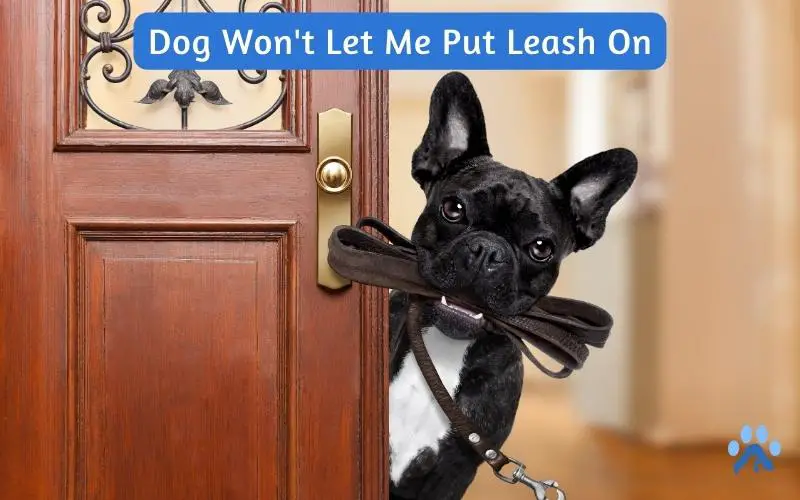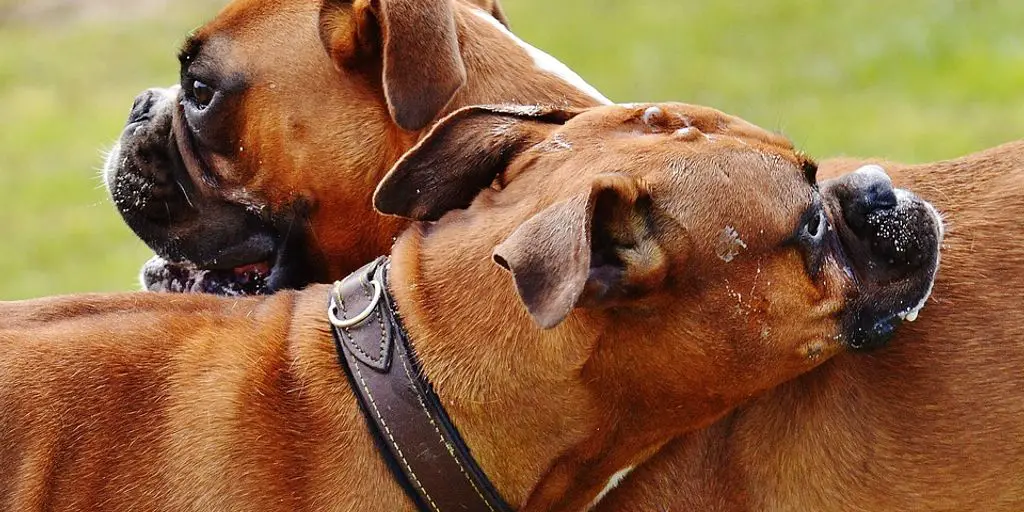A well-trained pup can ring all the exciting changes when going on walks and engaging in outdoor activities. However, it can be incredibly frustrating when your pet refuses to let you put a leash on them.
So, have you ever wondered to yourself, “Why my dog won’t let me put a leash on?” Well, it can be for various reasons, including its traumatic experiences with leashes or that it doesn’t want to be in a restricted position.
No matter the reasons, training your pup to accept a leash is essential for having a well-behaved canine companion, and it doesn’t have to be stressful.
Therefore, this blog post will discuss strategies to help your dog accept a leash in a kind and gentle way.
We will explore common mistakes to avoid, tips for successful leash training, and the best tools to use in the process.
Here’s all you need to know about,
Leash Training: Dog Won’t Let Me Put Leash On
Leash training can be difficult, especially if your dog is resistant to being put on a leash.
However, it’s important to persevere and continue training your dog, as it’s essential to their safety and well-being.
Here are some tips to help you get through the tough leash training process:
First, try using a treat to lure your dog to come to you. Once he’s close, put the leash around his neck and give him the treat. You may need to do this a few times before he gets used to it, but eventually, he’ll associate the leash with something positive.
Try using a different type of leash or collar; sometimes, a change in equipment can make all the difference.
Keep training sessions short and sweet. Overly prolonged sessions can be frustrating for you and your dog, making it more challenging to get him to cooperate.
Next, make putting on the leash part of your routine. Put it on them before you do anything else, like getting their food or going outside. This way, they’ll start to expect it and won’t be as resistant.
Be persistent and patient. Get your dog accustomed to using a leash. Put it on them for short periods of time while you’re doing something they enjoy, like playing fetch or going for a walk. This will associate the leash with positive experiences.
Common Mistakes to Avoid While Leash Training Your Dog
Dogs can easily become tangled in the leash or run away and get lost. To avoid these stressful situations, here are some common mistakes to avoid while leash training your dog:
Not using the proper equipment – using a collar that is too loose or a harness that doesn’t fit correctly can make it difficult to control your dog on a walk. Instead, be sure to use equipment that is comfortable for your dog and gives you good control.
Not starting slow – When you first begin leash training, it’s essential to go slowly and let your dog get used to the new sensation of being attached to you. Try taking little strolls around the block, for instance, before venturing on lengthier excursions.
Using inconsistent orders and rewards – As soon as you begin leash training, you have to be constant with both. Dogs learn best when given clear cues and constant praise for good behavior.
Not paying attention to body language – Dogs communicate through their body language, so paying attention to what your dog is trying to tell you on a walk is essential. If they pull on the leash or seem stressed, take a break and try another day again.
Using too much pressure – don’t pull on the leash or use harsh corrections. This will only make your dog more resistant to training.
Not monitoring progress – make sure you’re checking in frequently and adjusting as necessary.
Giving up too soon – like with any new skill, leash training takes time and patience. But stick with it, and you’ll be rewarded with a well-behaved dog!
How to Train Your Dog to Put on a Leash?
Dogs are natural explorers and love to sniff and check out new things. However, without a leash, they can quickly get into trouble.
That’s why it’s essential to train your dog to walk on a leash so that you can take them on adventures without worry.
But what if it’s the same case for you, “My dog won’t let me put a leash on?” It’s just you require a few things to train your dog to put on a leash: patience, treats, and of course, a leash. Here’s how:
Accustom your dog to the look and feel of a leash. Let them see and sniff the leash while you’re holding it, and dangle it near their head while they’re sitting or lying down. Praise them for being curious and calm.
Put the leash on your dog while they’re in a relaxed position. Start by clipping the leash onto their collar while they’re lying down or sitting calmly. Then let them get up and move around with the leash attached. Praise them for not getting too excited.
Take your dog for short walks on a leash. Start with just a few minutes at a time, and gradually increase the length of the walks as your dog gets used to being on a leash. Be sure to praise them frequently for walking calmly by your side.
If your dog starts to resist the leash, don’t force them. Instead, if they start pulling or trying to run ahead, stop walking and stand still until they calm down. Then start walking again at a leisurely pace. Over time, they’ll learn that pulling on the leash won’t get them anywhere.
Conclusion
Training a dog to accept a leash may be difficult, but hopefully, this guide has given you some ideas on how to accomplish that.
So, if you are still wondering, “Why my dog won’t let me put the leash on?” Just relax and try these effective ways to train them to accept and even enjoy wearing a leash.
However, remember it’s essential to be patient and consistent in your approach and to provide plenty of positive reinforcement to show your dog that there’s nothing to fear. It will make things even easier for both of you.
Frequently Asked Questions
Why won’t my dog let me put a leash on it?
It can be challenging to comprehend why your dog won’t allow you to attach a leash to it. Dogs often resist the leash because they associate it with leaving their home or yard, something that can make them feel anxious.
Additionally, some dogs may have had a traumatic experience wearing a leash or not have had much exposure to it.
Suppose your dog displays signs of fear or anxiety when you try to put a leash on it. In that case, it is best to work with a qualified trainer to help you understand why your dog is displaying this behavior and to help you create a training plan to help your dog become comfortable with the leash.
How do you get a dog to let you put a leash on them?
Do it slowly and gently when ready to put the leash on your dog. Make careful to speak in a soothing, quiet tone to your dog. If your dog is still uneasy, stop and try another time again.
It is also important to remember to be patient and consistent while training your dog to get used to the leash.
Why is my dog scared of putting on a leash?
Your dog may be scared due to past negative experiences with leashing, such as painful tugging or being left alone in a new environment.
It could also result from a lack of proper leash training, as some dogs are unfamiliar with the sensation of wearing a leash and may have a natural fear of it.
Additionally, some dogs may be uncomfortable with being restricted or becoming the center of attention while being taken outdoors.
Why does my dog try to bite me when I put his leash on?
Many dogs have a natural aversion to being restrained, and the sensation of the leash being put on can bring out instinctive behaviors.
Dominance aggression can also factor in this behavior, as the dog may be trying to establish himself as the “alpha” of the situation.
So, it is crucial to figure out the cause of this behavior and find ways to address it, such as providing positive reinforcement and working with a professional trainer to help your dog learn to be comfortable with being handled.
Is it OK to drag a puppy on a leash?
No, it is not OK to drag a puppy on a leash. Puppies are fragile and young, and dragging them can cause physical and emotional trauma, leading to behavioral issues later.
Not to mention, dragging them can be very dangerous for the puppy, as they can get hurt from being pulled too hard or tripping over something.
Instead, it is important to slowly and gently introduce your puppy to the leash and teach them to walk correctly on the leash.



